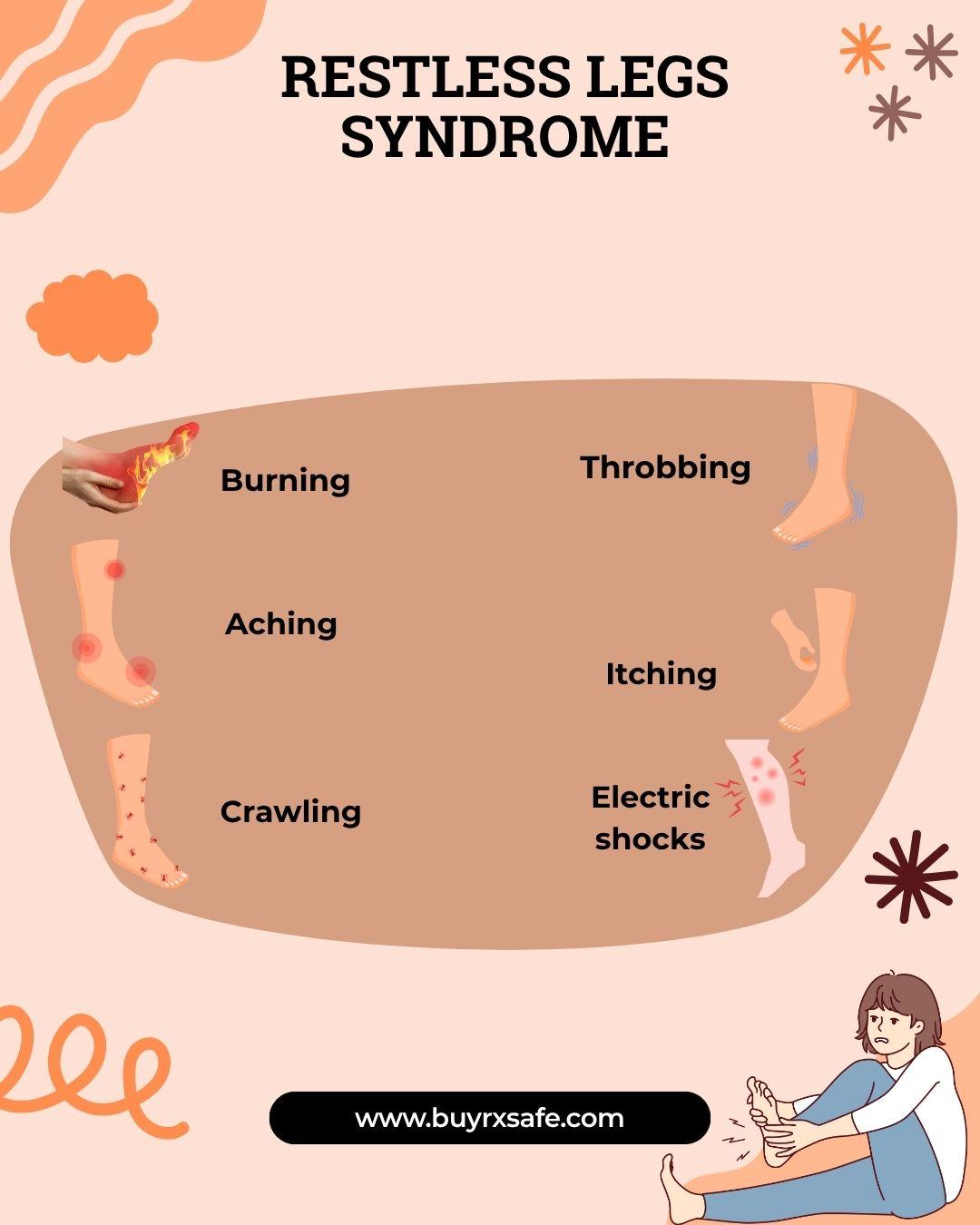Top 5 Treatments to Calm Restless Legs Syndrome

Introduction to Restless Legs Syndrome
Restless Legs Syndrome (RLS), also known as Willis-Ekbom Disease, is a neurological condition. It causes an uncontrollable urge to move the legs. The urge often worsens during rest or nighttime. It can lead to poor sleep and exhaustion. Many people also feel uncomfortable tingling, itching, or pulling sensations. These symptoms can make daily life difficult.
Doctors diagnose RLS based on symptoms. No single test can confirm the condition. Treatment depends on how severe the symptoms are. Some people manage with natural remedies. Others need medication. The goal is to calm the urge and improve sleep quality.
Gabapentin 300mg for Restless Legs Syndrome
Gabapentin 300mg is one of the commonly prescribed medications for RLS. Its active ingredient is Gabapentin, which affects the way nerves send signals in the brain. It helps reduce the urge to move the legs. It also helps relieve the uncomfortable sensations that come with RLS. Gabapentin works by calming overactive nerves. This makes it easier for people with RLS to fall asleep and stay asleep longer.
Gabapentin 300mg is often used for nerve pain and seizures. In RLS, it reduces nerve signals that trigger the need to move. Doctors may prescribe it when symptoms are moderate to severe. It is taken in the evening or before bedtime. Like all medications, it may cause side effects. Drowsiness, dizziness, and fatigue are common. Most people tolerate it well with the correct dose.
Top 5 Treatments to Calm Restless Legs Syndrome
1. Gabapentin and Other Prescription Medications
Gabapentin 300mg helps manage nerve activity linked with RLS. Other medications include dopamine agonists like pramipexole and ropinirole. These work by balancing dopamine in the brain. Iron supplements are also helpful if blood tests show low iron levels. In some cases, opioids may be used. These are reserved for people with severe symptoms who don’t respond to other treatments.
Always follow a doctor’s instructions when taking prescription medicine. Avoid taking medication from more than one class unless guided by a healthcare provider. Proper dosage and timing reduce side effects.
2. Warm Baths and Massages
A warm bath relaxes tense muscles and eases symptoms. Taking a bath before bedtime may help the legs feel more relaxed. Massaging the legs improves blood flow. This reduces the tingling or crawling feeling.
Use oils like lavender or peppermint for added comfort. Focus on gentle circular movements to calm the nerves. Massage therapy also helps reduce stress, which may worsen RLS symptoms.
3. Heat or Cold Therapy
Using warm or cold packs on the legs can help. Some people feel better with heat. Others prefer a cold compress. Both help numb uncomfortable sensations. They also improve blood circulation.
Try placing a heating pad or cold gel pack on the legs for 10 to 20 minutes. Do this before going to bed or when symptoms start. Alternate between heat and cold if needed.
4. Regular Exercise
Moderate physical activity helps lessen symptoms. Stretching, walking, or yoga improves blood flow and reduces leg restlessness. Avoid heavy exercise late in the day. It may increase symptoms for some people.
Focus on gentle stretches and low-impact activities. Leg raises, calf stretches, and light cycling can be effective. Keep the routine consistent. Make exercise part of your daily habits.
5. Sleep Hygiene and Relaxation Techniques
Poor sleep habits worsen RLS. Make the bedroom comfortable. Keep it dark, cool, and quiet. Go to bed and wake up at the same time every day. Avoid screen time an hour before bed. Use blackout curtains and white noise machines if needed.
Try deep breathing or meditation. These help calm the mind and body. A relaxed mind supports better sleep. Techniques like progressive muscle relaxation or guided imagery can also help.
Diet and Lifestyle Tips to Support Treatment
Eating a balanced diet helps reduce symptoms. Include iron-rich foods like spinach, red meat, and beans. Avoid caffeine and alcohol. These can make symptoms worse. Stay hydrated throughout the day.
Smoking can trigger symptoms and reduce blood flow. Try to quit or cut down. Also, limit sugar intake. High sugar may irritate nerves and worsen sensations.
Supplements for Restless Legs
Some people benefit from supplements. These include:
-
Iron – Needed for dopamine production. Low iron can trigger RLS.
-
Magnesium – Helps relax muscles and nerves.
-
Folic Acid and Vitamin B12 – Support nerve health.
Only take supplements if a doctor advises. Avoid self-medicating, especially when using prescription drugs.
Monitoring and Follow-up
Keep track of symptoms in a journal. Note what worsens or improves the condition. Share this with your doctor during check-ups. Regular monitoring helps fine-tune treatment.
RLS symptoms may change with time. What works now may not work later. Keep your healthcare provider updated on any changes.
Avoid These Common Triggers
Certain things can make RLS worse:
-
Caffeine late in the day
-
Long periods of sitting or resting
-
Certain medications (like antihistamines or antidepressants)
-
Stress or anxiety
-
Dehydration
Identify and avoid these triggers. This helps reduce the frequency and intensity of symptoms.
Conclusion
Restless Legs Syndrome can make life difficult. But with the right approach, symptoms can be managed. Gabapentin 300mg, physical activity, massage, good sleep habits, and heat or cold therapy offer real relief. Lifestyle changes and support from a healthcare provider improve long-term outcomes.
Many people find lasting relief with a mix of treatment options. Listen to your body. Work with your doctor. Track what works. Relief is possible with patience and proper care.







